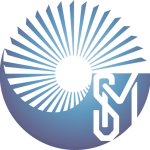Speaker
Description
Reactive sputtering is a very useful technique, particularly to prepare inhomogeneous interference filters, where refractive index changes smoothly during deposition. In such context, precise control over the involved parameters becomes imperative to obtain a good reproduction of the optical properties [1]. This study employed a pulsed direct current (pulsed DC) power source to investigate the influence of duty cycle on the target poisoning, sputtering plasma characteristics, electric signals, and the optical and morphological properties of synthesized films.
The experimental setup was characterized by analyzing the behavior of plasma emission via optical emission spectroscopy and voltage-current signals, while modulating parameters such as the oxygen content within the vacuum chamber. A set of thin films were coated on glass substrates, under different system conditions. The films underwent characterization employing spectroscopic ellipsometry to ascertain their optical constants, atomic force microscopy for surface morphology analysis, and X-ray diffraction for determination of crystalline structure.
The results indicate that longer duty cycles required higher oxygen levels to poison the target. Additionally, a detailed analysis of electrical signals revealed non-square waveforms, whose characteristics were influenced by both duty cycle and partial oxygen content within the sputtering chamber, resulting in higher effective voltages during the on-time of the pulsed current and voltage. Also, influenced the film characteristics, higher voltage during the metallic mode enhanced ion energy, promoting greater atom mobility and rougher surface morphology. Conversely, in the poisoned mode, limited atom mobility due to the oxide layer resulted in smoother surface morphology and slower grain growth.
Reference
R. Sanginés, N. Abundiz-Cisneros, O. Hernández Utrera, C. Diliegros-Godines, and R. Machorro-Mejía, “Plasma emission spectroscopy and its relation to the refractive index of silicon nitride thin films deposited by reactive magnetron sputtering,” J Phys D Appl Phys 51(9), 095203 (2018).
This work was supported by
This work was supported by the National Council of Humanities Sciences and Technology of Mexico, CONAHCYT [IxM CONAHCyT, 1081; CF-2023-I-704] and PAPIIT-UNAM [grant number BG101123] projects. E. Teran-Hinojosa acknowledges her Postdoctoral fellowship from CONAHCYT.
| Keywords | Reactive Magnetron Sputtering, Pulsed DC, Optical Emission Spectroscopy |
|---|---|
| Author approval | I confirm |
| Author will attend | I confirm |

